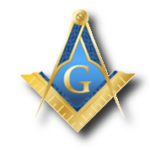About Masonry – The Basics
Freemasonry (often referred to as “Masonry”) is a fraternal order whose basic tenets are brotherly love, relief (philanthropy), and truth. We strive to enjoy the company of our brother Masons, assist them in times of personal trouble, and reinforce essential moral values. There is an old adage that Masonry “takes good men and makes them better”, which is our goal.
It has often been observed that men are the products of everything they come into contact with during their lifetime. Masonry offers a man an opportunity to come into regular, enjoyable contact with men of good character, thus reinforcing his own personal moral development. Of course, Masonry is also a vibrant fellowship of men who seek to enjoy each other’s company, a fraternity.
To maintain this fraternity, discussion of religion and politics within the Lodge is forbidden, as these subjects are those that have often divided men in the past. Masons cover the spectrum of both religious and political beliefs and encourages a man to be religious without advocating a particular religion, and to be active in his community without advocating a particular medium of political expression.
While there probably are some actual stone-workers who are Masons, Masonry does not teach is membership the literal techniques of stonework. Rather, it takes the actual “operative” work of Medieval Masons and uses it as an allegory for moral development. Thus, the symbols of Masonry are the common tools that were used by medieval stonemasons: the gavel, the rule, the compass, the square, the level, etc. Each of these has a symbolic meaning in Masonry. For example, Masons are said to meet “on the level”, meaning that all Masons are brothers, regardless of social status, personal wealth, or office within the Lodge or in the world at large. Similar symbolism exists for other tools.
Masonry is distinguished from other fraternal orders by its emphasis on moral character, its ornate rituals, and its long tradition and history, which dates back to at least the 17th century in modern form, the 14th century (c. 1350-1390) in the written evidence of its precursors, and back to the mists of antiquity in its origin. Masonry has a continuously documented paper history (i.e., Lodge to Lodge) since 1717, though historical analysis shows Masonry to be much older.
There are also a great many things that Masonry is NOT: a religion, a secret society, etc., as discussed in the FAQ section.
There are three degrees in Blue Lodge Masonry: Entered Apprentice (or “”First degree”) Masonry, Fellow Craft (or “Second Degree”) Masonry, and Master (or “Third Degree”) Masonry. Promotion generally requires the mastery of a small body of memorized material, the contents of which varies from jurisdiction to jurisdiction. In some jurisdictions, only the signs, tokens, and grips of each degree must be learned; in others, a longer amount of material must be mastered.
Appendant Masonic bodies confer additional degrees; for example, Scottish Rite Freemasonry awards the 4th to 32nd Degrees and the honorary 33rd Degree. These appendant bodies require that the brother first attain the first three degrees of Freemasonry within a Blue Lodge.
Of course, no Mason would ever look down upon a brother simply because he was of a lower degree, because the degrees do not exist to create a pecking order or to confer rank. Rather, the degrees connote a system of initiation that allows men to become familiar with increasingly complex levels of information related to the august and ancient history and principles of Masonry at a comfortable pace. Proceeding from the Entered Apprentice to Master Mason Degrees in the U.S. can take as little as three months, while degrees are spaced apart by a year’s interval in England.
Most Lodges have regular communications (meetings) once a month, that are also referred to as “business meetings.” In the U..S, these are typically only open to Master Masons. In England and in some U.S. jurisdictions, these meetings are usually opened in the First Degree, and EAs may attend). Conferring of degrees is usually done at other meetings during the month.
While conferral of degrees and mundane business do take up a portion of a Lodge’s time, there are a host of other activities in which Masons can engage within the fraternity. Charitable work is often done, in the form of fundraisers, community volunteer work, etc. And there are also a great many things done for the simple pleasure of company: monthly breakfasts or dinners, picnics, card/chess matches, lecturers on Masonic history, and so on. Masonry is a fraternity, and its membership seeks to have fun. However, it has elements and purposed not found in other fraternities, which become clearer to brethren as they progress in their Masonic journey.
Local Masonic Lodges are organized under Grand Lodges. In the United States, each state has its own Grand Lodge, which is a peer with every other Grand Lodge in the world. The U.S. does not have a single Grand Lodge: each Grand Lodge is supreme in its jurisdiction (e.g., in that state) but has no authority elsewhere. Of course, this does not mean that Masonry in New York is radically different than Masonry in Scotland or New Mexico. Masons are very traditional and the differences between Grand Lodges are usually superficial in nature.
The head of a Lodge is given the title Worshipful Master. This, of course, does not imply that Masons worship him; it is meant to indicate that the individual himself worships his supreme being. There are presently approximately 5 million Masons in the world, half of whom are in the United Stat

